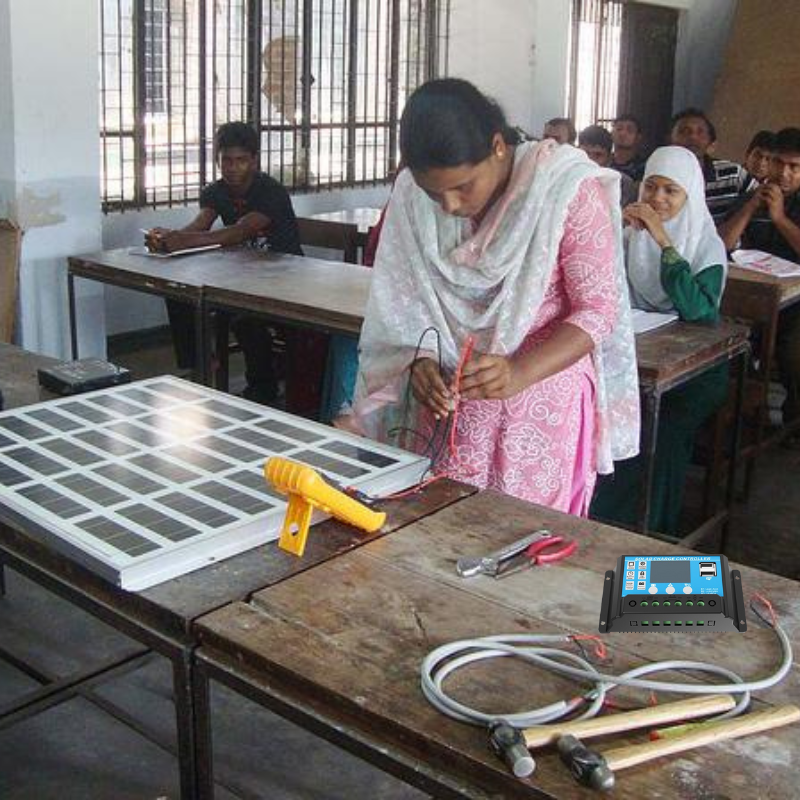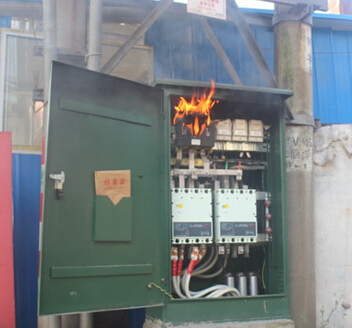“10A PWM Solar Charge Controller: Why It’s Africa’s Most Reliable Solar Partner”
Affordable, Durable & Life-Changing – How This Tiny Device Powers Homes Across Africa
Introduction: Real Stories from Africa’s Energy Crisis “In Lagos, Nigeria, Mama Amina used kerosene lamps to light her small shop until a fire destroyed her goods. In rural Kenya, students study under moonlight when their village’s diesel generator fails. Across Africa, unreliable energy steals opportunities – but a simple solution exists: the 10A PWM solar charge controller.”
Using real-life scenarios to resonate and pinpoint the core issue: Africa needs low-cost, easy-to-maintain sustainable energy solutions.
Part 1: Why PWM Technology is the Best Choice for Africa?
| 2022 | |
| Countries | Electricity Regulatory Index (ERI) |
| Uganda | 0.85 |
| Egypt | 0.79 |
| Senegal | 0.71 |
| Ghana | 0.71 |
| Kenya | 0.70 |
| Zimbabwe | 0.69 |
| Tanzania | 0.68 |
| Sierra Leone | 0.66 |
| Algeria | 0.64 |
| Liberia | 0.63 |
| Togo | 0.62 |
| Eswatini | 0.62 |
| Namibia | 0.62 |
| Zambia | 0.61 |
| Angola | 0.61 |
| Cameroon | 0.61 |
| Rwanda | 0.61 |
| Nigeria | 0.59 |
| Cote d’Ivoire | 0.57 |
| Ethiopia | 0.56 |
| South Africa | 0.55 |
| Botswana | 0.53 |
| Congo Democratic Republic | 0.53 |
| Cape Verde | 0.52 |
| Burkina Faso | 0.50 |
| Lesotho | 0.49 |
| Malawi | 0.48 |
| Niger | 0.48 |
| Benin | 0.47 |
| Mali | 0.45 |
| Mozambique | 0.37 |
| Madagascar | 0.33 |
| Mauritius | 0.32 |
| Guinea | 0.31 |
| Gambia | 0.30 |
| Seychelles | 0.29 |
| Central African Republic | 0.29 |
| Burundi | 0.28 |
| Mauritania | 0.23 |
| Gabon | 0.17 |
| Sao Tome And Principe | 0.16 |
| Chad | 0.15 |
| Congo Republic | 0.10 |
The specific range and evaluation criteria for the Electricity Regulatory Index (ERI) can vary depending on the assessing organization. However, generally, ERI scores range from 0 to 1 (or 0% to 100%), where:
Closer to 1 (or 100%): Indicates a very robust regulatory framework for the power sector, with high transparency, effective accountability mechanisms, well-structured markets, easy access to electricity, and efficient regulatory institutions.
Closer to 0 (or 0%): Indicates significant deficiencies in the regulatory framework, requiring major improvements.
General Evaluation Criteria
While the exact scoring criteria may vary, the following general guidelines can help interpret different score ranges:
0.8 – 1.0 (80% – 100%):
Excellent: The regulatory framework for the power sector is highly developed, with high transparency, strong accountability mechanisms, competitive markets, easy access to electricity, and efficient regulatory institutions.
0.6 – 0.8 (60% – 80%):
Good: The regulatory framework is fairly well-developed but may have some areas for improvement, such as market structure or the effectiveness of regulatory institutions.
0.4 – 0.6 (40% – 60%):
Moderate: The regulatory framework has notable issues, possibly in areas like transparency, market competition, or ease of electricity access, which need addressing.
0.2 – 0.4 (20% – 40%):
Poor: The regulatory framework has many problems and may require comprehensive reforms to improve regulatory quality and market efficiency.
0.0 – 0.2 (0% – 20%):
Very Poor: The regulatory framework is severely underdeveloped, with almost all aspects needing significant improvement.
Specific Case Analysis
Suppose an international organization releases an ERI report with the following scores:
Country A: Score of 0.85This indicates that the country’s power sector regulatory framework is highly developed and performs excellently across most metrics.
Country B: Score of 0.55This suggests that the country’s regulatory framework is moderately developed but has considerable room for improvement in areas such as transparency and market structure.
Country C: Score of 0.20This indicates that the country’s regulatory framework is severely lacking and requires comprehensive reform to enhance overall quality.
What Is Considered “Normal”?
Typically, a “normal” ERI score should be at least 0.6 (60%) or higher. This means that the regulatory framework for the power sector has a solid foundation and performs well in most key areas. If the score is below this level, it indicates significant areas for improvement.
east 0.6 (60%) or higher. This means that the regulatory framework for the power sector has a solid foundation and performs well in most key areas. If the score is below this level, it indicates significant areas for improvement.
1.1 Cost Advantage: Saving 50% of the budget, reaching more homes Price Comparison:
“To date, Bangladesh is the only country where solar home systems have reached a large percentage of the population. Now that solar panel prices have fallen and the PAYG model has emerged, the opportunity for scale in other developing countries has increased.”
Learn from this that the fallen of the whole solar system may contribute more Africans can reach to the clean solar energy.
MPPT Controller: 60−60−100 (Beyond the budget of most African households)
10A PWM Solar Charge Controller: 15−15−25 (Can be paired with a 100W basic system)
Case Study: “A Ghanaian cooperative saved $800 (choosing PWM over MPPT) to install solar lighting systems for 8 families.”
1.2 Survivability in Extreme Conditions Heat Tolerance Design: Operating temperature -20°C to 55°C (Adaptable from the Sahara Desert to tropical rainforests)
Dust and Water Resistance: IP65 housing against sandstorms and rainy seasons (Contrasted with easily faulty diesel generators)
Zero Complex Maintenance: No moving parts, operable by elderly or children (No need for professional electricians)
1.3 Accurate Matching with Mainstream Systems in Africa Typical Configuration:
Solar Panel: 1×100W 12V (Most common specification in the African market)
Battery: 12V 80Ah lead-acid battery (Easily available locally, mature recycling system)
Calculation Verification: “10A PWM solar charge controller + 100W panel = Provides power for a mobile phone (5W) for 20 hours daily + 5 LED lights (3W×5) for 4 hours—sufficient for basic family needs.”
Part 2: Life-Changing Case Studies from African Users
2.1 Household Scenario: From Darkness to Light Ugandan Rural Household:
Challenge: Monthly $30 diesel cost accounts for 40% of household income
Solution: 10A PWM solar charge controller + 100W system (Initial investment $200)
Outcome:
Increased study time for children by 2 hours at night
Improved household income (Mobile charging station earns $15 per month)
2.2 Community Health Station: Powering Lives Malawi Clinic Case:
Problem: Vaccine refrigerator failure due to unstable voltage
Upgrade Plan: Dual controller redundancy design (10A PWM×2)
Impact: Vaccine preservation rate increased from 60% to 98%
Part 3: How to Choose and Install (Africa Edition Guide)
3.1 Avoidance Tips: Unique Challenges in the African Market Beware of second-hand refurbished batteries: Teach how to check battery health (Use a multimeter to measure voltage)
Anti-theft Design: Suggest pouring concrete for mounting brackets (Include simple blueprints)
Rain Season Preparation: Install panels at an angle to avoid water accumulation (Attach photos taken with a mobile phone)
3.2 Step-by-Step Installation Tutorial Tool List: Just need wrenches, electrical tape ($2 locally purchasable)

5-Minute Wiring Demonstration:
Panel → Controller → Battery → Load (Mobile phone/USB light)
Safety Tips:
Connect the battery first, then the panel (To avoid burning out the controller)
Wrap the battery with old tires for anti-theft protection
Part 4: Testimonials from African Experts and Users
Kenyan Solar Engineer John’s Comment: “I recommend PWM for 90% of rural projects — The extra money spent on MPPT could buy 2 spare batteries, which is what Africa truly needs, a pragmatic choice.”
Senegalese User Aïda’s Video Quote: “This PWM solar charge controller has stood the test of sandstorms, with two years of faultless operation. We can now run fans all night!”
References:
1:Jan. (2022) IRENA_Market_Africa_2022_Summary. Available at:https://www.irena.org/-/media/Files/IRENA/Agency/Publication/2022/Jan/IRENA_Market_Africa_2022_Summary_ZH.pdf
2:Sanjoy Sanyal (2017) Available at:https://www.wri.org/insights/pay-you-go-solar-could-electrify-rural-africa
3:Heargrow Solar Calculation Online Tool Available at:https://heargrow.com/new-tools/
4:africa-energy-portal.org https://africa-energy-portal.org/eri/overview


